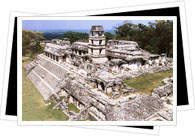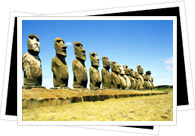The United Nations Educational, Scientific and Cultural Organization (UNESCO) world heritage site list comprises nearly 900 locations of cultural and natural heritage which are considered to have 'outstanding universal value to humanity'.
Twenty percent of all the natural world heritage sites on UNESCO's list are located in Latin America and the Caribbean as are twelve percent of the world's cultural sites.

There are also many other world heritage sites in Latin America which are not included in the UNESCO listings, but provide a wonderful insight into people and races who lived many generations ago.
The Maya, Aztecs and Inca are probably the three most famous empires in Latin American history, before the Europeans arrived who all have left distinctive precolumbian architecture examples which are considered nowadays as world heritage sites.
Different Latin American empires had different traits, some were potters, others engrossed in agriculture and some were master builders and stonemasons who have left such outstanding creations that in the modern world we can only question how it was possible to work with basic tools and create world heritage masterpieces which to date cannot still be fathomed in terms of moving tons of rock over large and difficult terrains.

Most world heritage sites in Latin America can be found in Mexico and Peru, stemming from the times of the Maya and Aztecs in Mexico and the Inca who started their empire from Peru. Other civilisations such as that of Easter Island (Rapa Nui) have left the modern day world examples of their work, in this case their moai statues, but as yet archaeologists and scientists have been unable to say who these people were.
A selection of treasured world heritage sites that you can see in Latin America are described in the following pages.